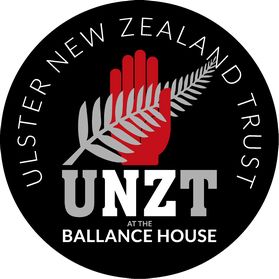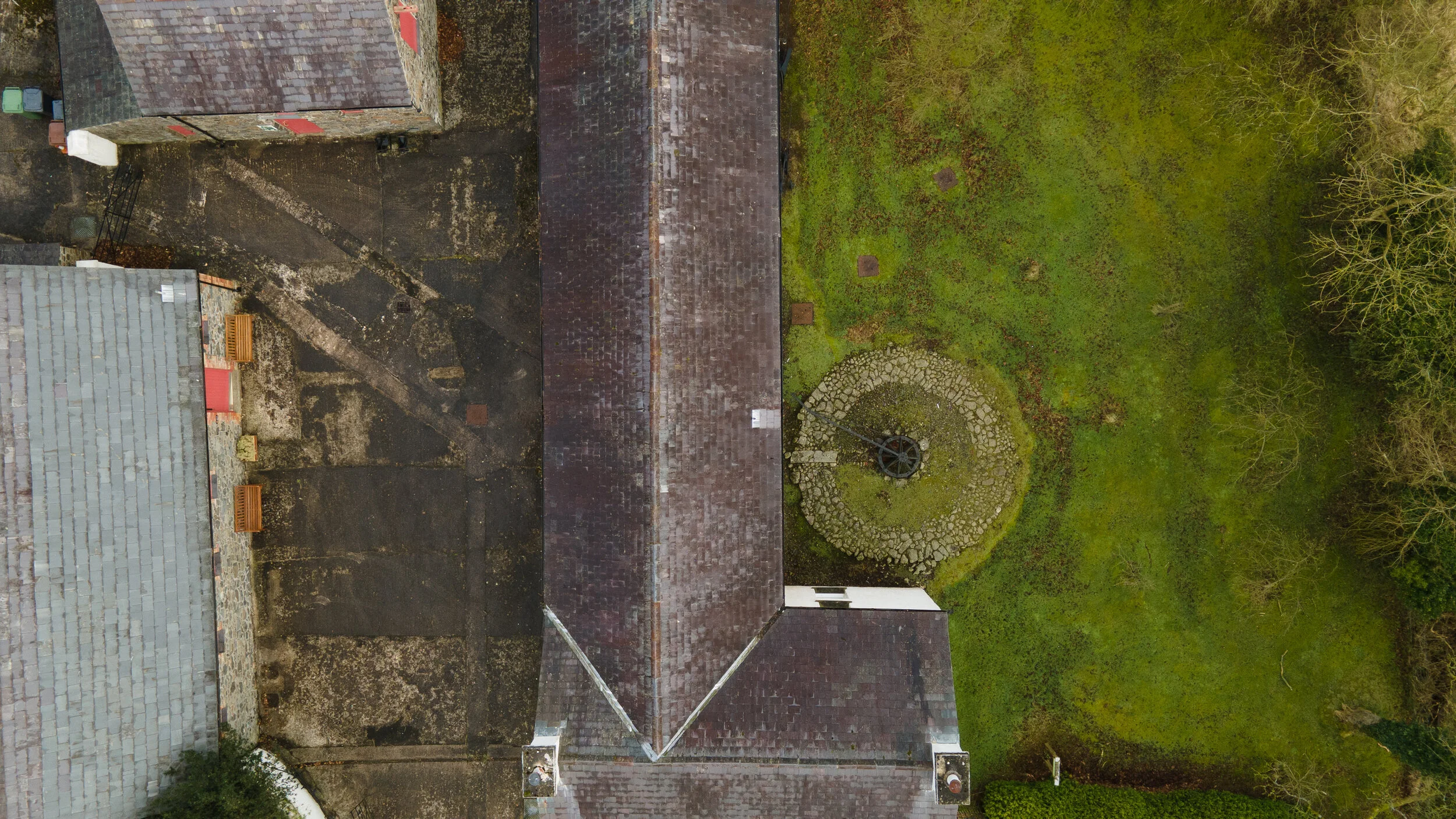Keeping youngsters busy after school was a problem solved on many Victorian and Edwardian farms by setting them to lead a horse round and round a horse walk such as the one at The Ballance house. Often for several hours.
Horse power for generations was the only power available not only in the fields, but to power churns and milling equipment around the farmyard.
Look carefully at the following photo and you can see the tunnel through which a connecting rod from the central spindle on the walker ran into the room at The Ballance House containing the churn or on some farms a mill or even a set of fans to glean the grain. That is separate the grain – wheat, barley or oats - from the chaff. This was often done where seed was being prepared for sale. The Ballance family used their horse walker to power churns making butter. A placid horse was attached to the boom from the central spindle.
horse walker at the ballance house
Often the sale of butter and eggs was an important source of cash income year round for the farm wife. Especially during and after the two World Wars when food was rationed. Many wives would have headed to Lisburn of a Tuesday to sell butter and eggs before returning home after procuring such essentials as tea, sugar and even whiskey to treat winter colds.
Fanners or barn fans, as more usually called in Ulster, preceded proper thrashing mills by quite some time and were the forerunners of the threshing mill. In 1784 Andrew Meikle, a Scotsman, put together the simple hand mill and the even older fanners to build his first proper threshing mill. An efficient means of removing the grain from the straw and chaff, Meikle's design has lasted the test of long years and was the basis of most threshing machines such as the Garvey and today's self propelled combine harvesters.
These cut and thresh the grain in the field so the days of the static barn fans or the travelling thresher arriving in the stackyard are passed. Powered by a steam engine and in later years a tractor the thresher arriving was a great social event. In response to the toot of the steam engine neighbours arrived to help, enjoy the crack, thick sandwiches and strong tea.
But like the threshing mills that once toured the farms each winter long gone are the wooden butter churns and barn fans. Usually powered for hours each Saturday by a small boy leading a large Irish Draught or even Clydesdale horse round a circular horse walk like the one at Ballance House.
In the 20th century butter making gradually moved from the farm to the local creamery. Often a co-operative founded and owned by farmer share holders. The co-operative movement as promoted by Sir Horace Plunkett was particularly strong in progressive farming nations such as Denmark and the Netherlands.
Leading local dairy farms
Today Dale Farm, formerly the NI Milk Marketing Board, is owned by local dairy farmers and has grown to become by far the largest producer owned dairy co-operative in the UK with processing plants across Northern Ireland, south west Scotland and Cumbria. Fresh local milk from its 1300 farmer owners is used to create award winning dairy products such as Dromona butter. Power coming not from small boys walking large horses, but from large green energy sources such as hectares of solar panels and high tech wind turbines.
Some innovative milk producers, such as the Drayne Family of Lisburn, instead of supplying a processor developed their own on farm milk processing plant to supply consumers. For further local information, go to Dale Farm and Draynes Farm websites.
To see more photos of our Horse Walker, check out our aerial drone footage








